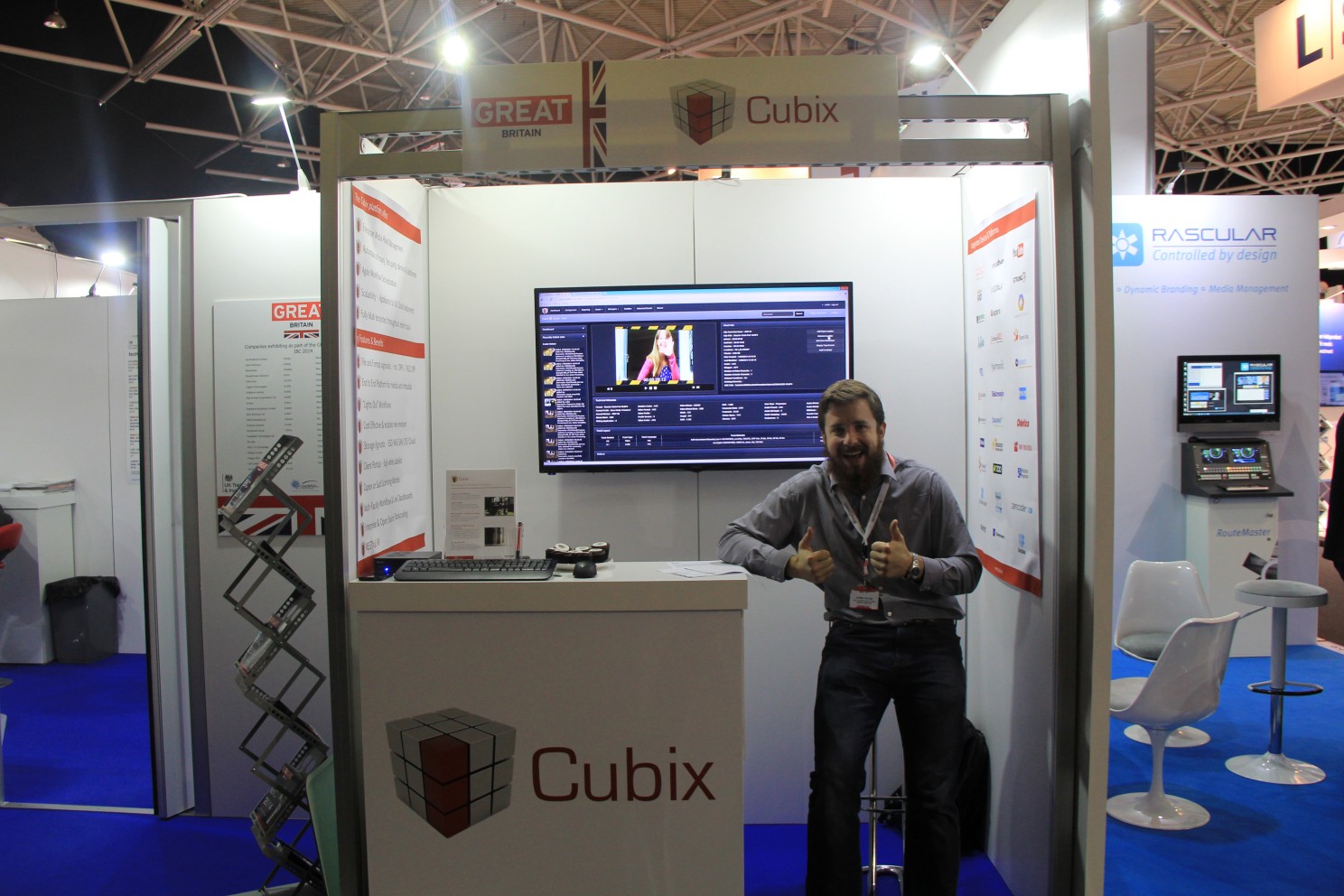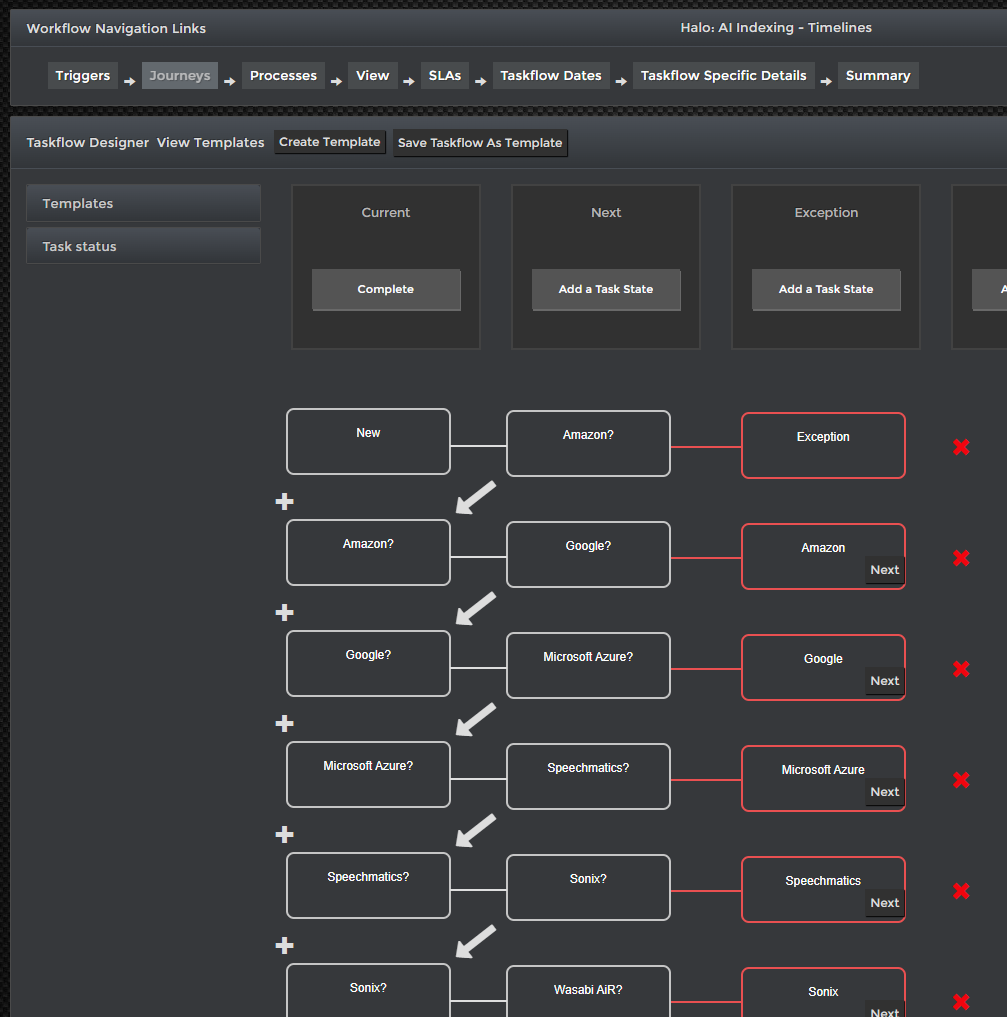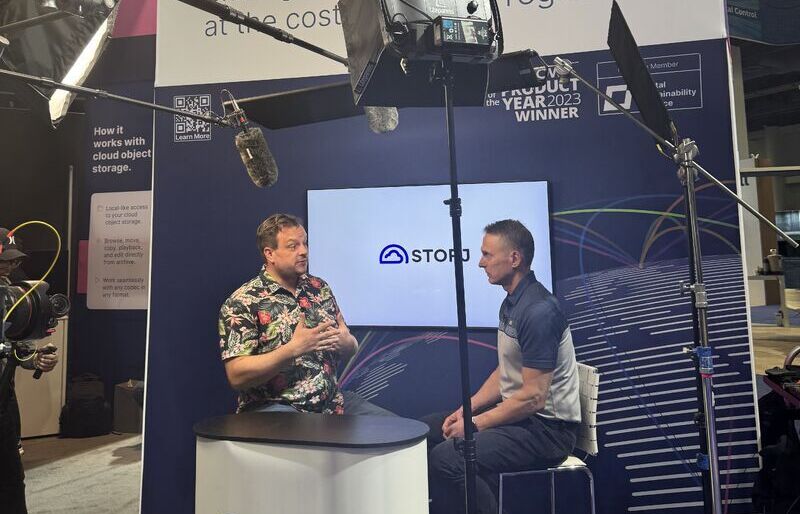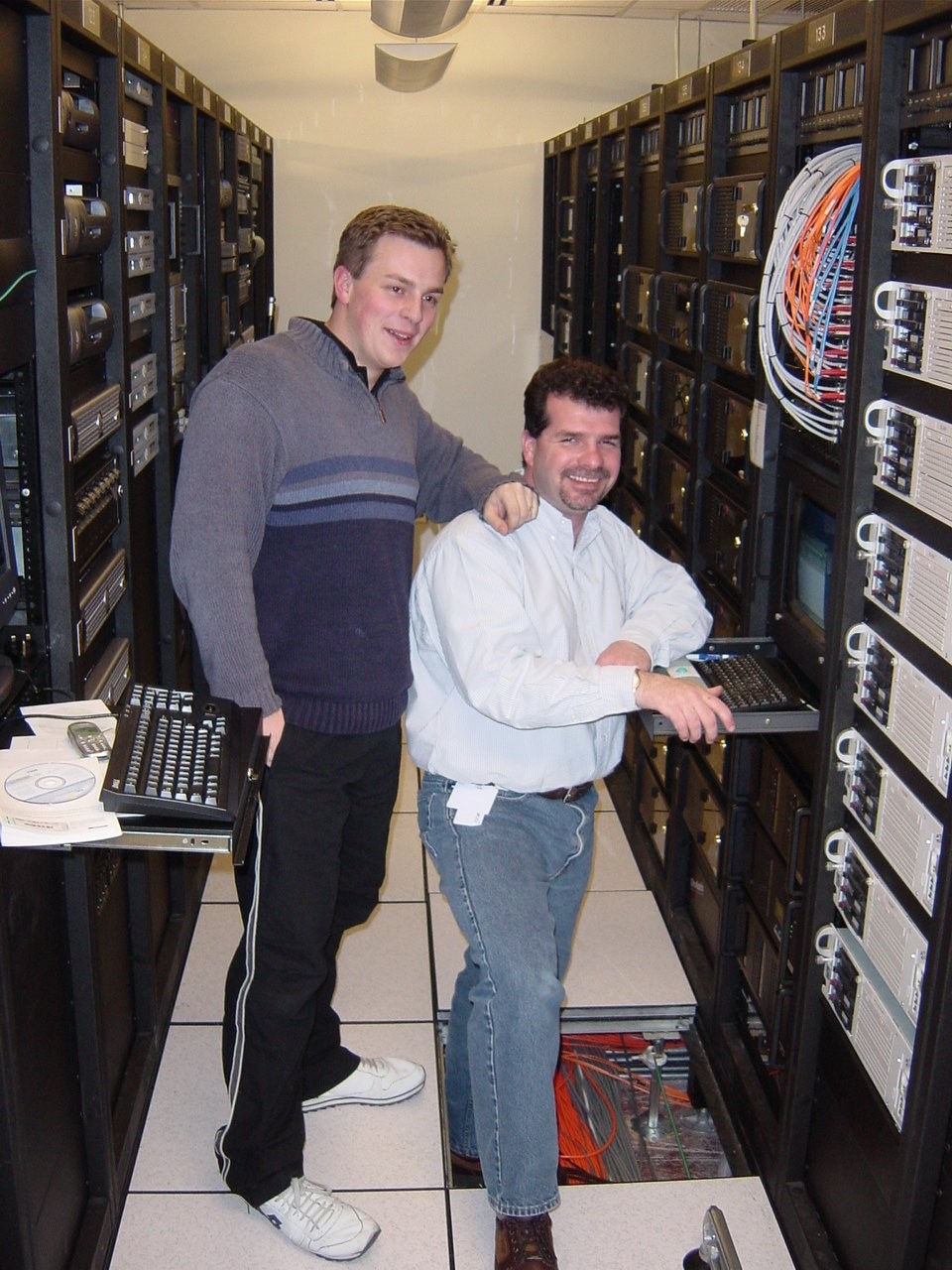Written by James Gibson, Founder & CTO of Ortana Media Group
When I founded Ortana in 2013, the goals were pretty simple. Create a platform that provided MAM capability with a highly adaptable workflow engine. The platform needed to not be focused on any one vertical within media and entertainment, rather be malleable enough to work across them, yet customisable enough to meet the different specific needs. It also needed to be able to operate on premise, in the cloud, or as a hybrid – and as such be able to scale by “n”.
12 years later, these core beliefs have not changed.

I have always known that a system’s workflow capability will always be limited by how good its integrations are. There is no point in having some fancy workflow engine if you cannot say with 100% accuracy what is happening at the application / storage level, regardless of where that is located.
This is why, since day one, we have always had an integration-first policy, actively integrating via API as many of the industry technologies that our clients use or are thinking of using. The trick is, doing so many integrations into a platform without good compartmentalisation can create a form of bloatware, given that you have code that you don’t need. So, in order to prevent this, since our very first integration, we have always taken the approach of using “harnesses” – lightweight applications, cross compiled for any OS, that run “at the edge” and work over API.
The benefit being, you run only the harnesses you need, where you need them. This “automation” layer effectively consumes a client’s estate (storage, compute, devices, etc.) and presents it equally as a common layer – regardless of its location and device type. Cubix now has over 150 integrations and counting, ranging from everything from a 1 Inch Type C to the latest GenAI!

Our workflow designer (we call it Taskflow) has always been different to every other designer on the market, and this is something we are proud of.
Still based on a drag and drop design, as a no-code interface, it overcomes many of the challenges faced with the standard “flowchart” approach and trying to render entire workflows on a 2D display. Critically though, we have always ensured that just as with our asset management and automation layers, our orchestration layer is also fully abstracted.
This may sound like a minor point, but it means that you can use our workflow engine entirely standalone, or more commonly with the automation layer, but entirely aside from any media.
Workflow with no media? Rare in a MAM.
This was first put to the test 7 years ago, when we were approached by a major ISP in the UK to provide “asset management” and provisioning services for their supply chain. The requirement was to manage physical assets within a warehouse and to operate a supply chain integrated with Salesforce - where users would prepare network devices with firmware/configurations before shipping via a courier to site.
The parallels to a media supply chain where all there – some form of order management system, complete with assets and metadata, active processes on the asset, followed then by a delivery (swapping in a courier as opposed to a file acceleration tool). I built the workflow in Cubix whilst riding across London in a taxi to the client site, and 60 minutes later had a verbal commitment to move forward. The only development needed was a harness for the courier API!
7 years later, with many enhancements added in, we still operate the same workflows today for our client.
In 13 years of running Ortana, we have, of course, had many conversations with clients who say they need a MAM / PAM / DAM.
We often find that understanding their requirements further, what they actually need are a set of workflows – some to acquire/get content in, others to augment or enhance media, and then those to distribute content out. Underpinning all this is a database tracking where content is and handling its metadata, however remove the workflow element and the client requirements are not met. You could say, they are left wanting MAWE… (this pun will make sense to you later… ).
I have always seen a MAM’s primary function as one of integrating the media/metadata into the organisation – allowing the media to ebb and flow to and from where it needs to, whether that be on-premise, remote or cloud. Ironically, far too many times we have found MAMs doing exactly the opposite, creating a silo of content either from the business in general, or from other teams/divisions in the business that are not part of the initial focus that brought the MAM in. Even worse, we have often found cases where we need to pre-treat media/metadata to get it into the MAM, due to it being in the wrong codec/format.

A MAM should take the content as is, where it is, and manage it (clue is in the acronym, surely?).
The worst form of data siloing I have witnessed, sadly, far too many times, is where the client is held hostage by their own MAM. Restrictions on accessing metadata, whether it be asset, editorial or transactional – in the form of hefty license uplifts to export the data, or to enable APIs, lock clients in rather than support the “integration” that should be at the heart of what a MAM does.

Instilled into me by my mentors and something I encourage every member of Team Ortana to believe in, is the concept of the “expert friend”.
At Ortana, we believe in not dictating strategy or vendor choice to a client – rather, having a solution that is modular enough and configurable enough to support natively their choice of workflows and technologies. We, of course, provide guidance and recommendations based upon our experience and the best practices we have discovered, allowing us to wrap Cubix around the client’s needs, not the reverse.
This is something that we find more and more with clients we are assisting outside of the traditional media vertical – whether this be for image, video, or just large volumes of data within corporate Marcoms teams. These organisations have survived using SharePoint, Google Drive, etc. and the ubiquitous use of a good Google Sheets to track and manage media.
Leveraging ticketing systems to track media requests has generally worked for the last few years, but now that the volumes of video they are managing is akin to that of a small broadcaster/post facility, the cracks are beginning to show. The essence of their requirements is the same as any traditional media facility, but often they are far more diverse when it comes to the storage mix, end user base and workflow needs. Projects in this world are smaller and quicker than those we are traditionally used to and so any system to support them needs to be more agile and reactive, and a lot more focused on workflow.
What I find interesting is that such organisations that are “new” to the media management problem are far more willing to move quickly on technology changes than those who have been dealing with the problem longer. This is in part due to their reduced footprint, and so one could argue that the technology change is easier to handle.
I believe though, part of this is a conditioning that media organisations have gone through about change, and that when dealing with larger MAMs/data stores, this must be difficult, painful and/or expensive. Traditionally, technology refresh was generally capex-driven, timed according to the depreciation of the assets on the books, and involved relatively large lumps of hardware.
Whilst still true for on-premise storage, more of the technology used today within media supply chains is software only, meaning it has a virtual footprint or is cloud-based. This means that if you had a fully integrated technology stack, even when that includes legacy technology, your ability to perform traditional business transformation projects – or even just simply swap out elements- is significantly improved.

We witness this first-hand with Ortana clients, who are able to adapt and flex much more easily than those clients deployed with more traditional MAMs.
AI for content indexing is a great example of this, where we know from experience that not all AI engines are born equal. Some specialise in certain genres of content, whereas the commercials of cloud can be cost-prohibitive for high volume workflows, in turn the capex cost of GPUs for on-premises AL / LLMs can be prohibitive for low volume workflows. The ability to swap in and out the suitable AI engine (or any integration for that matter) for the task at hand is key, something Cubix lets you do natively, with very minimal effort and impact.

Billing and transparency are also key considerations that so many systems out there, not just MAMs, can be terrible at. It amazes me how many systems in the marketplace are designed to process media, yet provide either very minimal reporting or no reporting at all. After all, there are very few workflows out there where someone, somewhere needs to pay for that action!
Multi-tenancy, tracking and reporting are also key in workflows – given one of the significant benefits to orchestration which is often overlooked, is transparency.
Understanding where a request is in a workflow, what its ETA is, what resources it has consumed and the associated costs, are all capabilities we ensure are present as standard. It's also important to be able to create data points that were not there before, by tracking progress and performance, so that actionable intelligence can be created, consumed and acted upon.
This journey which we have been on with Ortana really took a turn as we went into COVID, where our eyes were opened to a key mistake that so many of us are guilty of. When doing workflow analysis for our potential clients (an SoW process we always do as part of our “expert friend” approach), we were focused on the media side of things.
However, with so many of the use cases that we work in (post production, localisation, ENG, sports) there is a notion of a project of some form and in that project will be the need to grant users specific access to specific storage/content, often within specific timed workflows. The net result of all of this is the need for provisioning across a diverse range of systems – often done entirely manually by the IT team, or in the case of sensitive systems, even manually by senior management.

For a leading post house in London, grappling with the challenges COVID presented for client and staff access, their interest in working with Cubix switched from the media flow to looking at provisioning. Remote editing was achieved quite easily, given the plethora of technologies on the market that provided VDI/remote access; the issue was more specifically getting the engineers into the building to manage projects easily.
We now always ensure that when we do a workflow review, we look at the true TCO of the workflow – including those provisioning requirements that exist. This means that we often deploy workflows that have nothing to do with media themselves but are designed “around” media requirements.
A simple example is knowing a project exists, which users need access to which storage, and when. This allows Cubix to provision “just in time” the resources, where often a media-based workflow then occurs. This intertwining of the project requirement, scheduling, resource and asset data enables Cubix to be intelligent with its actions. After all, any storage device, whether it be located on-premise or in the cloud, will always be limited by the information it has access to. In being able to consume and manage all information, right from the project level all the way down to the disk, means Cubix has an awareness that can be leveraged

This really brings us to the essence of what we see organisations that face media challenges need to adopt today, a Media Aware Workflow Engine.
An architecture where you pick and choose the integrations you need, the ability to operate them where and when you need to (prem, cloud, remote). Integrating the "estate" within a common layer, with a policy of integration rather than replacement (including existing MAMs), that exposes all resource capabilities within that technology stack in a way that can be easily orchestrated.
Layering on top easily reconfigurable orchestration that not only drives the automation layer - reacting to data, triggers, SLAs - but also provides actionable intelligence from your workflows. This framework enables media to pass through this architecture, as deeply integrated as the other layers themselves, and have the stack understand and react. This is MAWE – letting you adapt and change as your business requires, rather than being held back by technology choices.
This also underlines another belief we have about having a “single pane of glass” for users, but not necessarily it being the same pane for everyone. Different stakeholders in an organisation have different requirements, and so by “de-siloing” existing systems, it means users can stay within that system, which is relevant to them, whilst data flows to the other systems. This allows you to keep existing equipment, MAMs, etc. that work well for their “point purpose”, whilst removing the restrictions or limitations that they have.
Not often do I expect you will read about a MAM software provider telling you to keep your existing MAM rather than replace it!
Some obvious benefits to this approach are a TCO reduction to workflows (both through reduction in human resources, but also improvements in billing through accurate reporting), but also a clear ROI on investment of both Cubix as well as your existing technology estate.
It also allows you to have the confidence to support changes in the business, given the control and transparency MAWE provides.
Security is also a significant benefit – achieved through a combination of reducing how much content is handled by operators. By orchestrating provisioning, you can implement best practices every time when it comes to access, not just when time allows. The audit logging that the MAWE methodology provides also ensures you can track exactly who did what, when – even years after the media has been delivered.

One of the biggest things I am proud of when it comes to Cubix is the fact that we have not had to move away from other core principles we started with 12 years ago in order to adapt to this new way of thinking. It has always had the “three layers” – understanding that the doctrine behind asset management, automation and orchestration is suitably different, that they should be handled independently, but within a common product stack. It has always been modular – using simple containerising methods means it’s easy to swap and change integrations and keeps the stack (and so cost) light – by only running what you need, when and where you need to run it. Our “widget” approach also allows for the same to be done within the UI – in that we can create UIs for custom use cases without affecting the core product.
Starting life as a MAM, but one with a modular, open architecture - Cubix is now able to be deployed as a systems integration platform, for data orchestration, provisioning, archive, distribution, ingest, a MAM migration tool and much, much MAWE.

When I started working in this industry in 2000, I used to be the “young one” in the room - something I find less and less in 2025!
Nonetheless, I like to imagine asking my 19-year-old self what the next 25 years of broadcast technology would look like, and I know for sure my predictions would be like those in Back to the Future. Fanciful ideas such as flying cars, holograms and being served by robots - many seem like science fiction still whilst writing this, but with drone taxis being licensed in Dubai, Abba concerts being performed without artists in the flesh and Elon Musk's cocktail-serving robots - all are tantalisingly close to a day-to-day reality.
GenAI, combined with the way younger generations consume media today, is obviously starting to, and will continue to have a massive impact on our industry – in my opinion, far beyond the impact streaming has had over the last 5 years. Being a dad to two teenagers of my own, I find it interesting the juxtaposition between consuming content from TikTok and YouTube seemingly all day, often as a preference over platforms such as Netflix and Disney+ (linear is not even a thing anymore in our household) - yet with the willingness to still go to the cinema and watch a high production value movie.
The concept of a Micro-Drama (content that is 60-120 seconds long for those who are not familiar) I find daunting as a fortysomething, and whilst I reach for my soap box as I cite this as an example of the lack of attention span "young'uns" of today have - the reality is, this change is coming.
I offer no prediction for what the next 25 years, or even what the next 10 years look like - but what I do know for sure is that it will be full of change, and at a rate that we have not seen before. I believe preservation and accessibility of content will be key, alongside the need to be able to trust and verify content. No doubt the explosion of content creation will continue, but this will only drive the need to manage, secure and discover content across an ever-diverse range of technologies and platforms.
In the near term, any organisation that handles content will need to adapt to survive and thrive; simply doing things "the way we always have" is no longer an option. At Ortana, we know from our experience that orchestration is at the heart of this – in the form of MAWE.
We look forward as we support our clients as their expert friend, to handling this ever-increasing rate of change, constantly learning and both challenging and defining best practices.
We invite you to come and join us. Here for the journey. Here for MAWE!